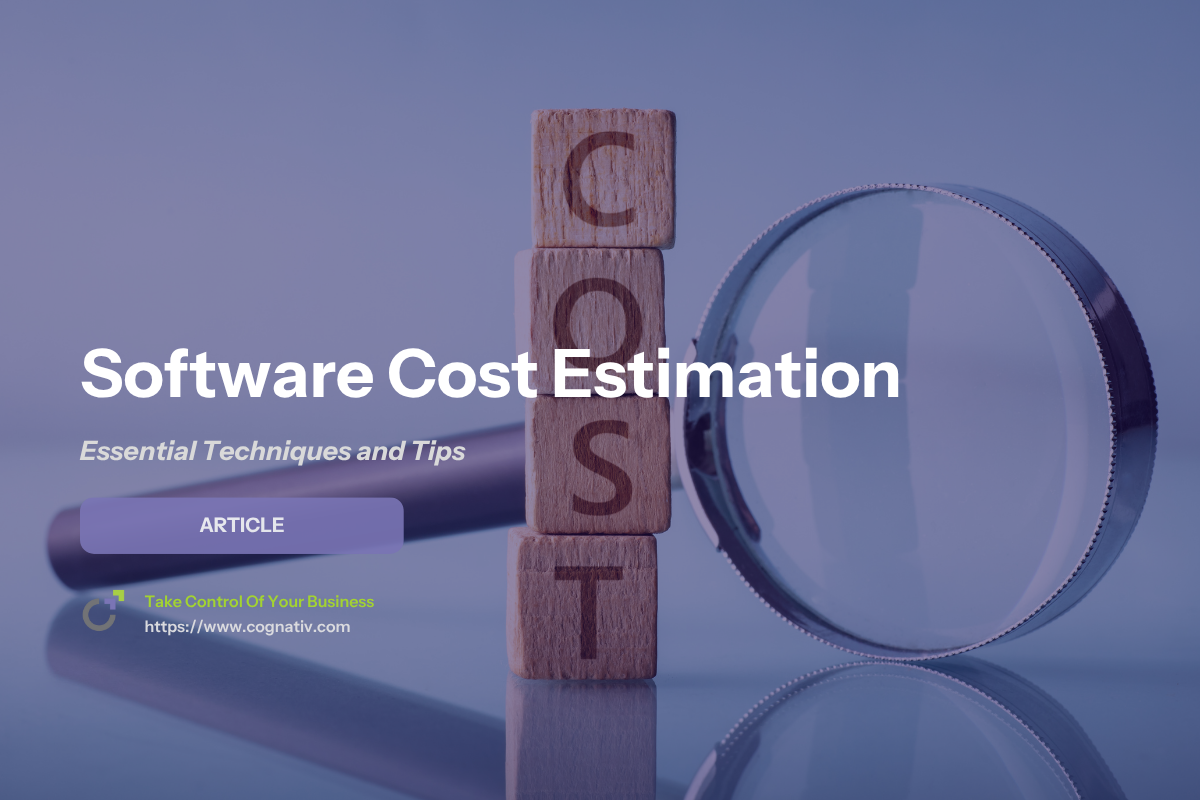Methods for Accurate Cost Estimation of Software Projects
Software cost estimation is essential for predicting the expenses of a software development project. It helps in planning budgets, allocating resources effectively, and avoiding financial surprises. This article explores key methods and best practices to help you make accurate cost estimation of software for your software projects.
Key Takeaways
-
Accurate software cost estimation is essential for effective project management, enabling better resource allocation, stakeholder satisfaction, and adherence to budgets and timelines.
-
Three core cost estimation techniques—analogous, parametric, and bottom-up—each offer unique advantages and are suited for different types and complexities of software projects.
-
Involving the entire project team in the estimation process, leveraging historical data, and regularly reviewing estimates can significantly improve the accuracy and reliability of cost predictions.
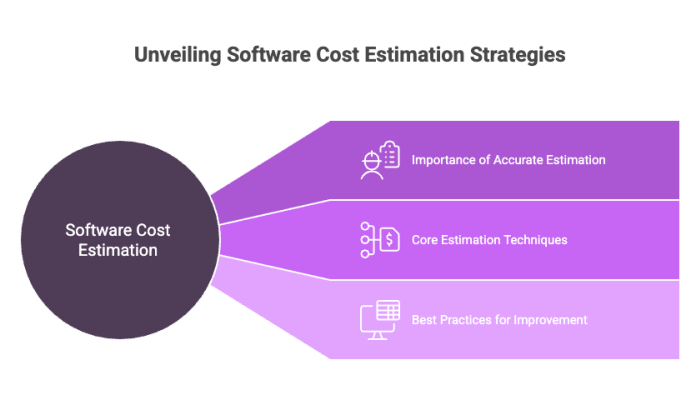

Understanding Software Cost Estimation
Software cost estimation is the systematic process of predicting the effort, duration, and financial costs associated with a software development project in software engineering. This process is crucial for managing project costs effectively, as it lays the foundation for planning, budgeting, and executing the project. Accurate cost estimates are vital for resource allocation and stakeholder management, ensuring that projects stay within budget and on schedule while maintaining quality standards. Project estimation is an essential aspect of this process.
Project managers play a vital role in cost estimation by:
-
Coordinating inputs
-
Monitoring progress
-
Managing stakeholder expectations
-
Mitigating risks as a project manager.
They also need to understand the project lifecycle, as different phases require different estimation approaches. Accurate cost and time estimates enable project managers to make informed decisions, improving resource management and preventing unexpected financial challenges.
A critical factor in setting a project’s budget is the project’s scope. The scope defines the boundaries of the project, including the specific tasks, deliverables, and timelines. Having a clear and well-defined project scope helps in creating accurate cost estimates and managing project costs effectively.
Definition and Key Elements
Software cost estimation encompasses both direct and indirect costs, including operational expenses and quality assurance. The main components of cost estimation are:
-
Labor costs, which often constitute the largest portion of a software project budget
-
Material costs, which may include software licenses, cloud services, and hardware
-
Equipment
-
Overhead expenses
-
Risk contingency
-
Software costs
Overhead expenses encompass indirect costs. This includes items like office space, utilities, and administrative support. Including risk contingencies is crucial to account for unpredictable factors during the project.
Essential resources for cost estimation include team members, equipment, and software requirements. By considering these elements, project managers can develop comprehensive and realistic cost estimates.
Why Accurate Estimates Matter
Accurate cost estimates are vital for managing budgets, allocating resources, and ensuring stakeholder satisfaction in software development projects. Successful cost estimation can significantly impact project timelines and budgets when managed effectively, helping to avoid common pitfalls that contribute to project failure. Incorporating insights from seasoned professionals can enhance the reliability of cost estimates, especially in unfamiliar project landscapes requiring expert judgment.
Involving the entire team in the cost estimation process improves accuracy and increases buy-in, leveraging the diverse expertise of team members. By using multiple estimation techniques and continuously refining estimates, project managers can achieve more accurate estimates and enhance overall project success.


Core Techniques for Estimating Software Development Costs
Software cost estimation involves three main methods: parametric, analogous, and bottom-up estimation. Each technique offers unique advantages and is suited for different project types and complexities. Selecting the appropriate estimation technique is crucial for project success, as it influences budget management and resource allocation.
There are three main types of cost estimation methods:
-
Analogous estimation leverages data from similar past projects to quickly derive cost estimates but may have potential inaccuracies.
-
Parametric estimation uses statistical models and historical data, providing more accurate cost predictions.
-
Bottom-up estimation calculates detailed costs for individual tasks and is highly accurate but time-consuming.
Understanding these core techniques helps project managers make informed decisions about which method to use based on the project’s scope and complexity.
Analogous Estimation
Analogous estimation relies on data from past projects that are similar in nature. This approach allows for quick cost estimation. This heuristic technique is particularly useful when detailed information about the current project is not available. Leveraging historical data allows project managers to derive a conceptual estimate, offering a rough idea of the project’s cost.
However, the accuracy of analogous estimation depends on the similarity between past and current previous projects. Potential inaccuracies may arise if the projects differ significantly in scope or complexity.
Despite this, analogous estimation remains a valuable tool for initial budget estimate and quick cost assessments.
Parametric Estimation
Parametric estimation uses statistical methods to relate historical data to project-specific variables, providing more accurate cost estimates. This approach involves developing a mathematical model that correlates cost drivers, such as project size and complexity, with historical data to predict the estimated cost. The constructive cost model (COCOMO) is a popular parametric estimation model used in software development.
Aligning stakeholder expectations with realistic timelines and budgets can improve project satisfaction and reduce conflicts. Misalignment between budget expectations and actual costs can lead to dissatisfaction and disengagement from stakeholders. Parametric estimation helps bridge this gap by providing data-driven, reliable cost predictions.
Bottom-up Estimation
Bottom-up estimation calculates costs for individual tasks, leading to a comprehensive project cost analysis. This method involves estimating costs for each work package and aggregating them to form the total project cost. In a mobile app project, each task has distinct cost estimates. For instance, UI design, backend development, and testing are all assessed separately.
While bottom-up estimation is highly accurate, it is time-consuming and requires detailed information about the project’s scope and tasks. Despite this drawback, it remains a preferred method for complex projects where precise cost estimates are crucial for successful planning and execution.
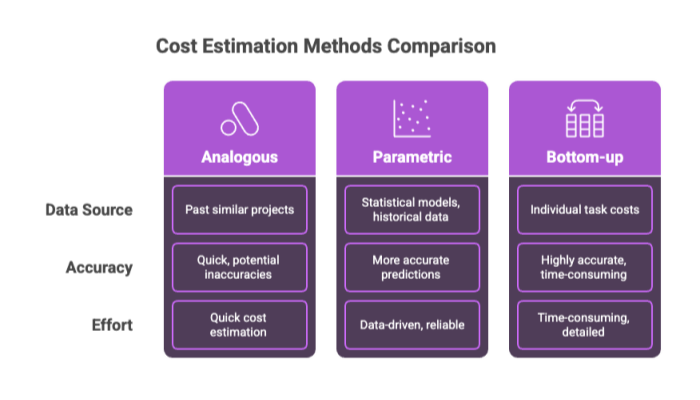

Advanced Estimation Methods
Advanced estimation techniques are essential for enhancing accuracy in the cost predictions of intricate software projects. These methods address the limitations of traditional techniques and provide more reliable estimates for complex projects. Three-point estimation, expert judgment, and cost of quality analysis are key advanced methods that project managers can use to refine their cost estimates.
Three-point estimation accounts for uncertainties by considering multiple scenario outcomes. Expert judgment leverages insights from experienced professionals, offering valuable guidance in complex scenarios. Cost of quality analysis focuses on maintaining high standards in software development by estimating costs related to preventing, detecting, and fixing quality issues.
Three-point Estimation
Three-point estimation is a method that accounts for uncertainties in cost estimation by combining multiple scenario outcomes. This technique calculates a total estimate using three different scenarios: optimistic, most likely, and pessimistic. Considering these varied outcomes helps project managers create more balanced and realistic cost estimates.
The weighted average in three-point estimation emphasizes the most likely scenario, improving budget accuracy.
For example, if a task is estimated to take 5 days in the best-case scenario, 10 days most likely, and 15 days in the worst-case scenario, the weighted average provides a more nuanced estimate, accounting for potential risks and uncertainties.
Expert Judgment
Expert judgment is a method used in cost estimation that leverages insights from experienced professionals to provide guidance in predicting costs. This approach is particularly useful in unique or complex projects where traditional estimation methods may fall short. Experts apply their knowledge and experience, along with team expertise, to assess project requirements, risks, and potential challenges, offering a nuanced perspective that enhances estimation accuracy.
Using expert judgment offers valuable insights that can significantly improve the accuracy of cost predictions. For instance, experts can identify potential pitfalls based on their past experiences and suggest adjustments to the project plan, ensuring a more realistic and reliable cost estimate.
Cost of Quality Analysis
The cost of quality analysis is essential for maintaining high standards in software development. This method encompasses costs related to preventing, detecting, and fixing quality issues. Investing in quality management practices early in the project can lead to significant cost savings in the long run.
For instance, a $50,000 investment in quality assurance tools can save up to $200,000 in bug fixes and support costs. Focusing on quality from the outset helps reduce the total project cost and ensures the delivery of a high-quality software product.
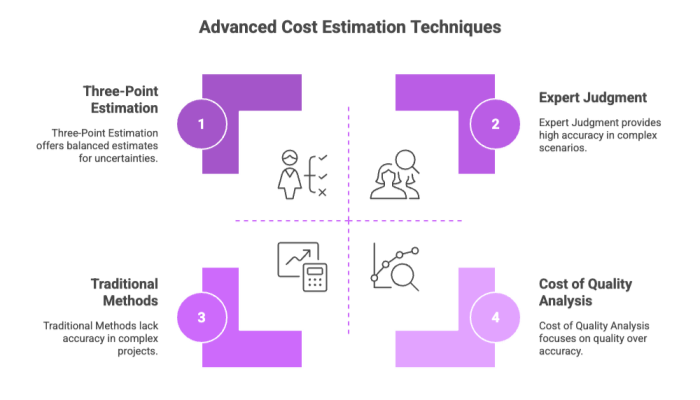

Tools for Software Cost Estimation
Software cost estimation tools are essential for generating precise estimates that lead to better project management. These tools simplify the estimation process and enhance accuracy and reliability, allowing project managers to manage project costs effectively. Key tools include COCOMO II, Function Point Analysis, and Planning Poker.
Using tools like Estimation Builder and SEER-SEM can dramatically improve the accuracy and reliability of software cost estimates. These tools:
-
Incorporate extensive historical data
-
Use statistical models to provide data-driven predictions
-
Ensure more accurate estimates
-
Enable better resource allocation
COCOMO II
COCOMO II is a parametric model for effort estimation in software development. This tool offers an open model that can be calibrated to fit specific organizational data, providing customized and accurate cost estimates. COCOMO II estimates effort in person-months, allowing project managers to plan resources effectively.
The flexibility of COCOMO II makes it suitable for various project types and complexities. The model’s default exponent value of 1.0997 can be adjusted based on project-specific factors, enhancing the accuracy of the final estimate.
Function Point Analysis
Function Point Analysis (FPA) quantifies software functionality by categorizing user interactions and assigning complexity weights. This method uses story points and function points to measure software size and complexity, providing a reliable basis for cost estimation.
By analyzing the functional requirements, project managers can develop accurate estimates and manage project scope effectively.
Planning Poker
Planning Poker is a collaborative estimation technique that uses consensus among team members to determine the effort required for various tasks. This method involves team members discussing and voting on the complexity of tasks, ensuring that all perspectives are considered in the estimation process.
Planning Poker promotes team collaboration and enhances project management by providing realistic and agreed-upon estimates. Involving the entire project team fosters engagement and buy-in, resulting in more accurate cost predictions and better project outcomes.
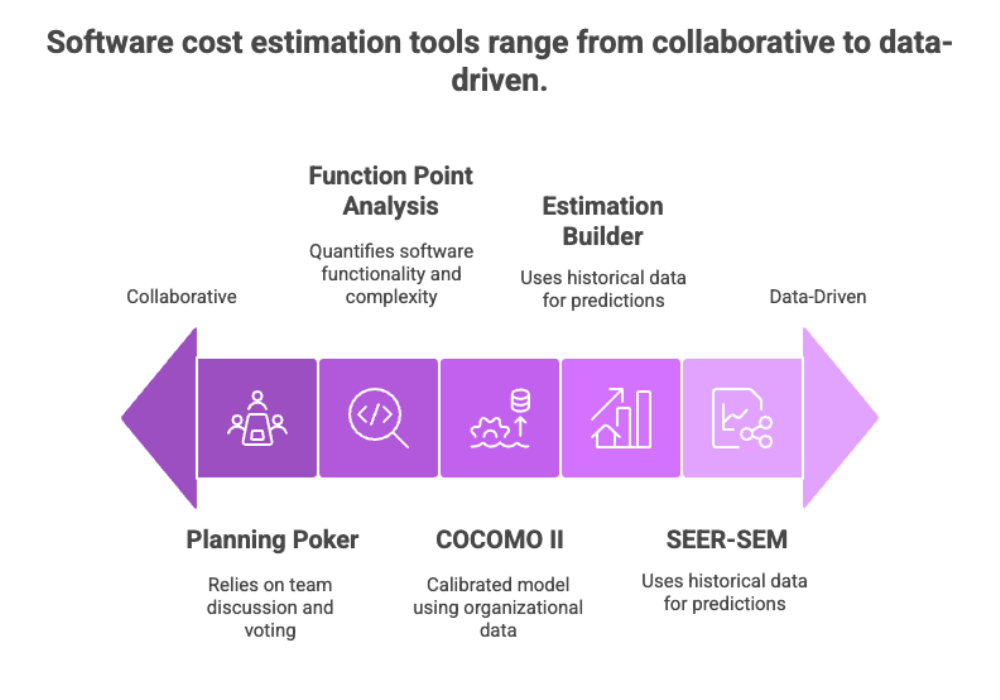

Best Practices for Improving Estimation Accuracy
Accurate cost estimation plays a vital role in the success of software development projects. It is essential for effectively managing resources and budgeting. Best practices such as using historical data, involving the entire team, and regularly reviewing and updating estimates can significantly enhance estimation accuracy. Collaborative estimation techniques like Planning Poker foster team engagement and lead to more accurate cost predictions.
Investing in quality management practices can reduce future costs by addressing potential issues early in the project lifecycle. By leveraging the insights and expertise of the development team, project managers can develop more accurate and aligned cost estimates, including a management reserve.
Use Historical Data
Using historical data in cost estimation provides valuable insights for future estimates and a realistic basis for projections. Comparing new budgets with old ones helps check alignment with actual costs, enhancing trust in estimates. Historical performance data is a key approach for making more accurate project estimates.
Identifying potential risks enables more realistic estimates and helps manage uncertainties. Analyzing past projects and leveraging historical data enables project managers to develop more accurate cost estimates, enhancing overall project success.
Involve the Entire Team
Engaging multiple stakeholders in the estimation process increases accuracy by leveraging diverse expertise. Collaborative estimates help uncover overlooked tasks or complexities that single estimates might miss. Involving the entire project team allows project managers to develop more comprehensive and realistic cost estimates.
Analyzing past projects helps identify discrepancies between estimates and actual outcomes, improving future accuracy. Industry benchmarks can also be useful when historical data is lacking for new service lines or technologies. Collaborative efforts and diverse expertise contribute to better project outcomes, including:
-
Analyzing past projects to identify discrepancies between estimates and actual outcomes
-
Using industry benchmarks when historical data is lacking
-
Leveraging collaborative efforts
-
Incorporating diverse expertise
Regularly Review and Update Estimates
Key points about cost estimation and monitoring:
-
Regularly review cost estimates to allow for adjustments based on new information.
-
Make necessary revisions to the project budget if feedback is received.
-
The monitoring phase in cost estimation is crucial for tracking progress and performance.
Achieving alignment with stakeholders on project budgets and timelines requires initial clarity and ongoing communication. Regular updates and feedback loops ensure that cost estimates remain accurate and reflective of the project’s current status, leading to better budget planning, project management, and outcomes.
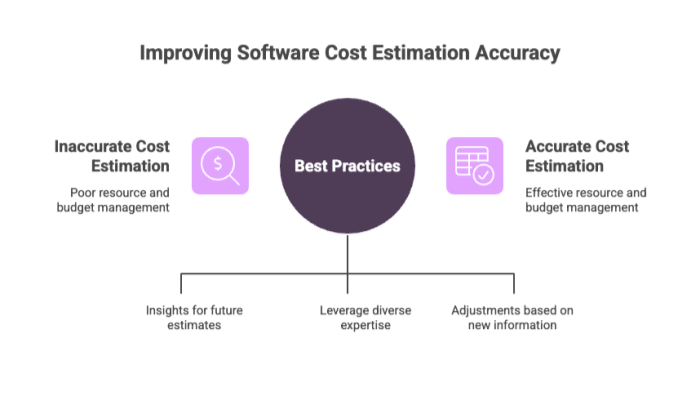

Managing Risks and Uncertainties in Cost Estimation
Effective management of risks and uncertainties is essential to meet cost, schedule, and performance objectives in projects. Conducting uncertainty and risk analysis improves the accuracy of cost predictions. Advanced methods for estimating costs, such as probabilistic techniques like Monte Carlo simulations, model uncertainties using random sampling.
Accurate project estimations help prevent scope creep by clearly defining project boundaries. Continuous validation of estimates helps ensure that projects remain aligned with actual progress and emerging information.
Maintaining ongoing communication with stakeholders through regular updates keeps everyone informed about any changes in cost estimates and enhances collaboration.
Identifying Potential Risks
New projects face challenges in cost estimation models due to new functionality, larger scale, different architecture, and innovation. To address these challenges, qualitative and quantitative techniques can be employed to evaluate the impact and likelihood of risks in cost estimation. Identifying potential risks early on enables project managers to develop more realistic and accurate cost estimates.
Understanding potential risks allows project managers to develop strategies to mitigate these risks and ensure successful project outcomes. This proactive approach to risk management is crucial for maintaining project timelines and budgets.
Allocating Contingency Funds
Longer timelines introduce more project risks and unknown variables. Accounting for potential risks and uncertainties requires specific budget adjustments, such as a line item for expected surprises, including a contingency reserve. Planning for contingencies and developing strategies to adjust project scope in case of unexpected changes is essential for managing project costs effectively.
Using statistical methods to assess risks associated with cost estimates allows for improved allocation of contingency funds. Adjusting cost driver ratings to match project complexity and using relevant data for calibration helps project managers develop more accurate and reliable cost estimates.
Scenario Planning
Scenario planning is crucial for preparing for various outcomes and their potential financial impacts during software cost estimation. Monte Carlo simulation is a technique that can be used to model uncertainties in cost estimates, helping in scenario planning.
Planning for multiple scenarios allows project managers to understand diverse financial implications and make informed decisions. The benefits of scenario planning include reducing risk, adjusting budgets, and enhancing decision-making processes in software projects. Considering different scenarios helps project managers develop more accurate and resilient cost estimates.
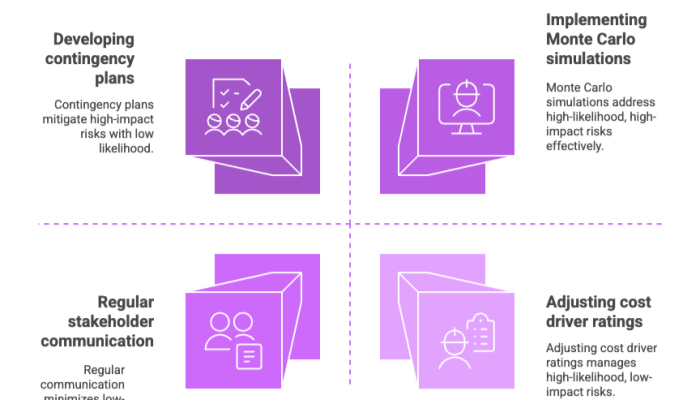

Communicating Cost Estimates to Stakeholders
Effective communication of cost estimates is crucial for building trust and managing expectations among stakeholders. Well-documented estimates serve as a solid baseline to manage client expectations regarding budget and timeline. Real-world examples often reveal that effective communication is crucial in avoiding miscalculations during project estimations.
Clear and transparent reporting helps manage stakeholder expectations by providing a basis for communication about project scope and deliverables. Setting realistic expectations for project costs and timelines is critical for software development success. Engaging stakeholders throughout the project lifecycle fosters trust and ensures that their needs are met through a user story.
Clear and Transparent Reporting
Transparency in cost estimates improves project support and satisfaction. Clear cost estimates help manage stakeholder expectations by providing a basis for communication about project scope and deliverables. Sharing the preliminary budget with stakeholders and the project team serves a specific purpose. It is aimed at gathering feedback on any areas that could be unrealistic or misaligned with project goals.
The business analyst team plays a critical role by creating a feature list based on analysis, which aids in developing transparent cost estimates. Ensuring clear and transparent reporting builds trust and collaboration among stakeholders, enhancing project support and business objectives outcomes.
Setting Realistic Expectations
Setting realistic expectations for project costs and timelines is critical for software development success. The 2023 Standish Group report indicates that only 35% of software projects finish on budget. This highlights the challenges faced in project management within the software industry. Stakeholders should be made aware of the common challenges in adhering to budget constraints to prevent disappointment.
Enhancing team communication through regular updates and transparent reporting can help align stakeholder expectations with project realities. Setting realistic expectations to manage expectations ensures client satisfaction and successful project outcomes.
Regular Updates and Feedback Loops
Engaging stakeholders throughout the project lifecycle fosters trust and ensures that their needs are met. Collaboration among all team members contributes to improving the accuracy of cost estimates and enhances buy-in from stakeholders. Continuous review and updating of cost estimates based on new information is essential to deliver realistic and accurate projections.
Maintaining regular updates and feedback loops ensures cost estimates remain accurate and reflective of the project’s current status. This approach enhances stakeholder engagement and contributes to better project management and outcomes.
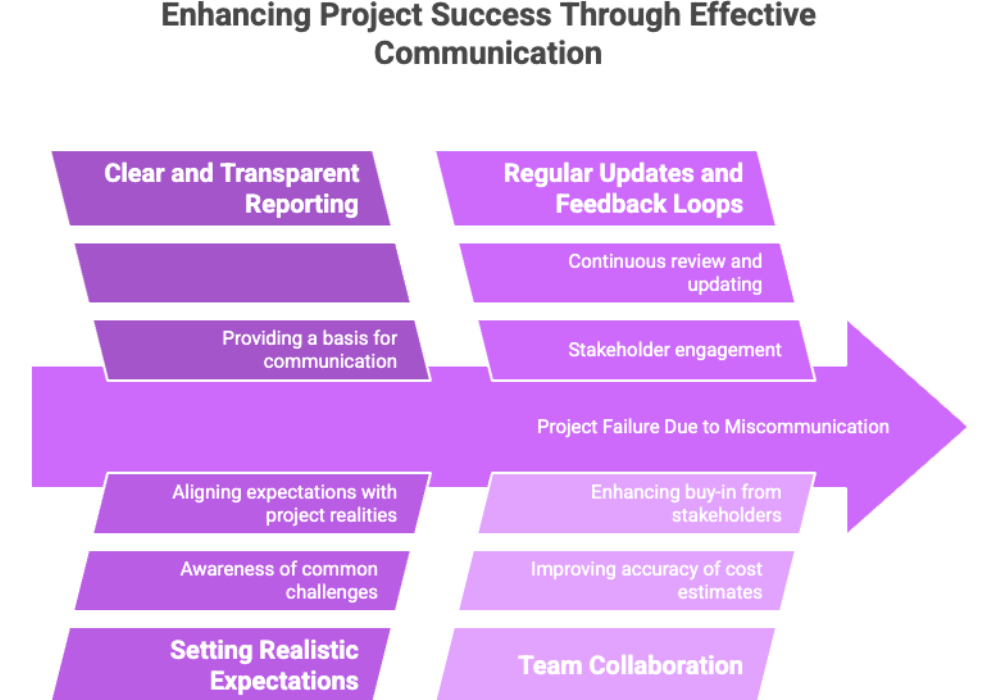

Case Studies of Successful Cost Estimation
Real-world examples of successful cost estimation provide valuable insights into best practices and lessons learned. The NASA Mars Pathfinder project exemplifies successful software cost estimation, completing within budget and ahead of schedule. Analyzing similar past projects helps project managers develop more accurate estimates and improve project outcomes.
Case studies of web development, mobile application development, and enterprise software solutions illustrate the practical application of cost estimation techniques in diverse project types. These examples highlight the importance of accurate cost estimation and the impact it has on project success.
Web Development Project
The web development team is capable of managing projects of various sizes. They can work on everything from simple websites to intricate web applications. For example, the estimated cost range for a bug fix project is between $2k and $10k. By leveraging past projects and using accurate cost estimation techniques, the team can deliver successful outcomes within budget.
Mobile Application Development
The estimated cost range for proof of concept applications is between $25k and $35k. The focus of mobile app development includes platforms such as iOS and Android. By applying accurate cost estimation techniques, the development team can ensure successful project completion and client satisfaction.
Enterprise Software Solution
Cost estimation for enterprise software solutions requires a deep understanding of the project’s scope, technology stack, and team capabilities. The complexity of an enterprise software development project is influenced by its size, type, and required integrations, often demanding a detailed assessment of the tech stack and compliance requirements. Estimations for enterprise software projects typically involve multiple phases, including requirement gathering, technical analysis, and risk evaluation to ensure accuracy and feasibility.
Project costs in enterprise solutions can vary significantly based on factors such as the geographical location of the development team and the chosen hiring model. Effective management includes regular communication and aligned expectations between stakeholders and developers to mitigate risks and ensure timely delivery in custom software development.
Utilizing models such as parametric, analogous, or bottom-up can enhance the accuracy of cost estimations in enterprise software projects.
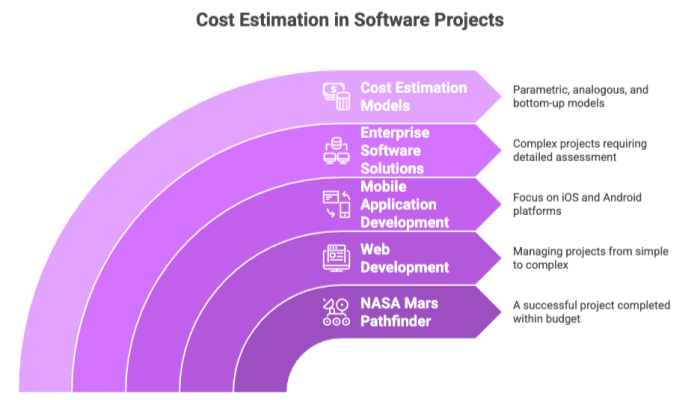

Summary
Accurate software cost estimation is fundamental to the success of software development projects. By understanding the core techniques, advanced methods, and best practices, project managers can develop reliable cost estimates that support effective project management. Utilizing tools and maintaining clear communication with stakeholders further enhances estimation accuracy and project outcomes. Embrace these strategies to navigate the complexities of software cost estimation and steer your projects towards success.

Frequently Asked Questions
In this section, we address common questions related to the cost estimation of software, providing clarity on essential concepts such as project charter, project scope, team estimates, and how the project progresses through its lifecycle. Understanding these elements is crucial for managing project costs effectively and delivering successful software development projects.
Whether you are new to software cost estimation or looking to refine your approach, these FAQs will help you grasp key aspects like total cost calculation, the importance of the team's velocity, and the advantages of combining multiple estimation techniques over traditional methods.
Why is accurate software cost estimation important?
Accurate software cost estimation is essential for effective budget management and resource allocation, ultimately ensuring stakeholder satisfaction and the successful delivery of high-quality products. It mitigates risks such as budget overruns and missed deadlines.
What are the main techniques for software cost estimation?
The primary techniques for software cost estimation are analogous estimation, parametric estimation, and bottom-up estimation. Each technique offers distinct benefits and is appropriate for varying project complexities.
How can historical data improve cost estimation accuracy?
Utilizing historical data significantly enhances cost estimation accuracy by offering a realistic foundation for projections and enabling comparisons with previous budgets, thereby increasing trust in the estimates. This approach ensures that future budgets are more aligned with actual costs.
What role do tools like COCOMO II and Planning Poker play in cost estimation?
Tools like COCOMO II and Planning Poker significantly enhance the accuracy of cost estimation by simplifying the process and fostering collaboration among team members. Their data-driven approaches lead to more reliable and precise cost predictions.
How can project managers effectively communicate cost estimates to stakeholders?
Project managers can effectively communicate cost estimates to stakeholders by providing clear and transparent reporting, setting realistic expectations, and maintaining regular updates and feedback loops. This method fosters trust and ensures successful project outcomes.

